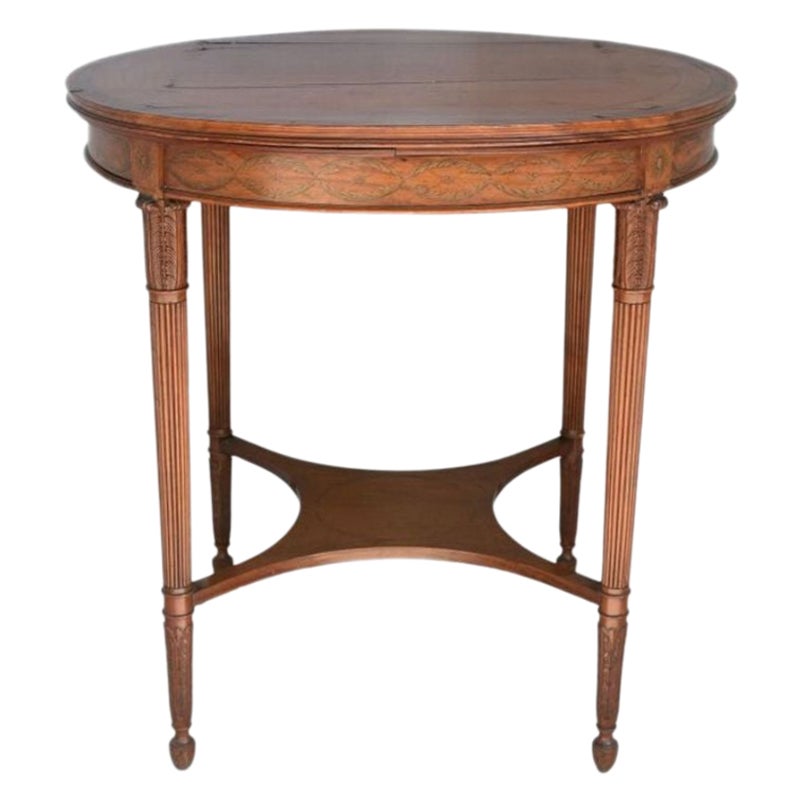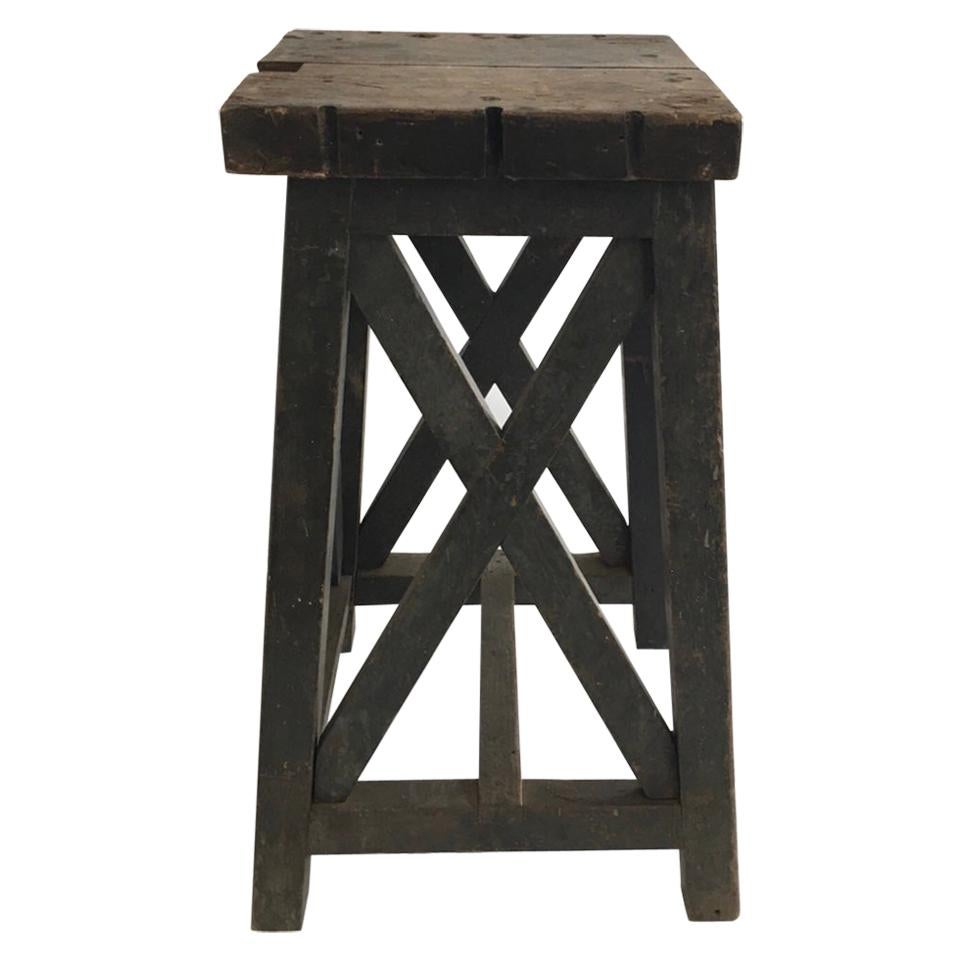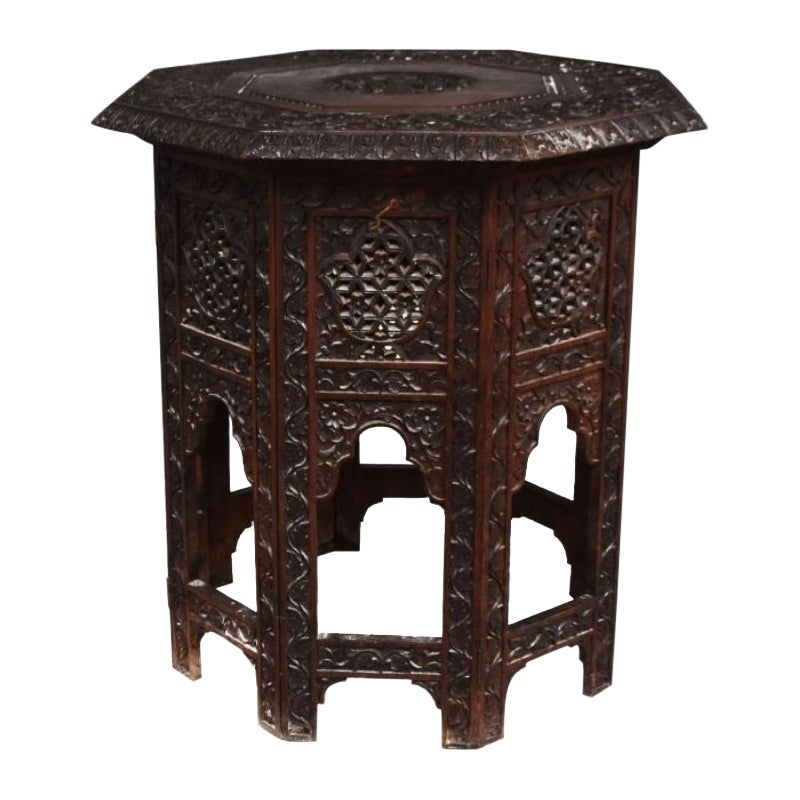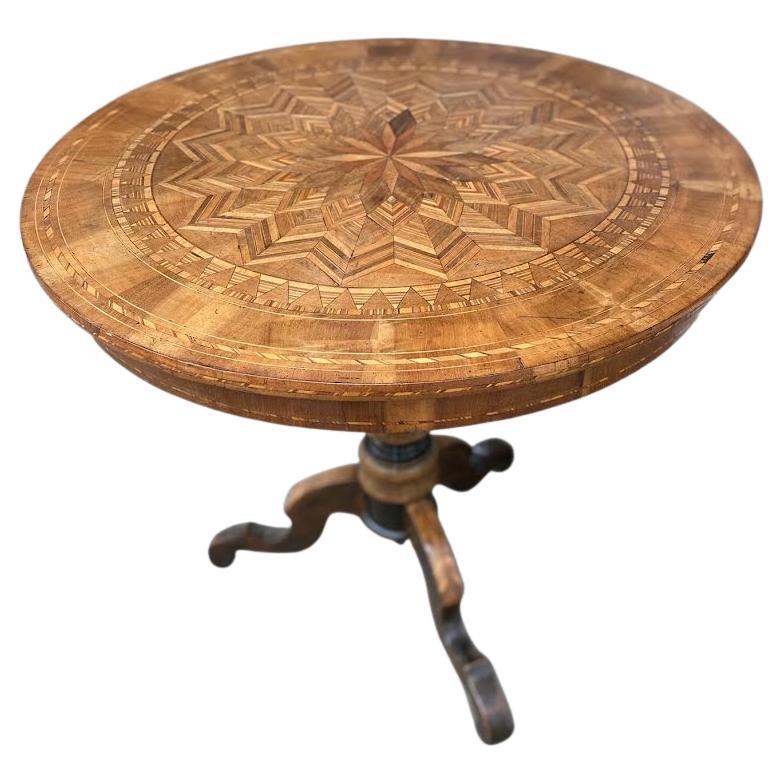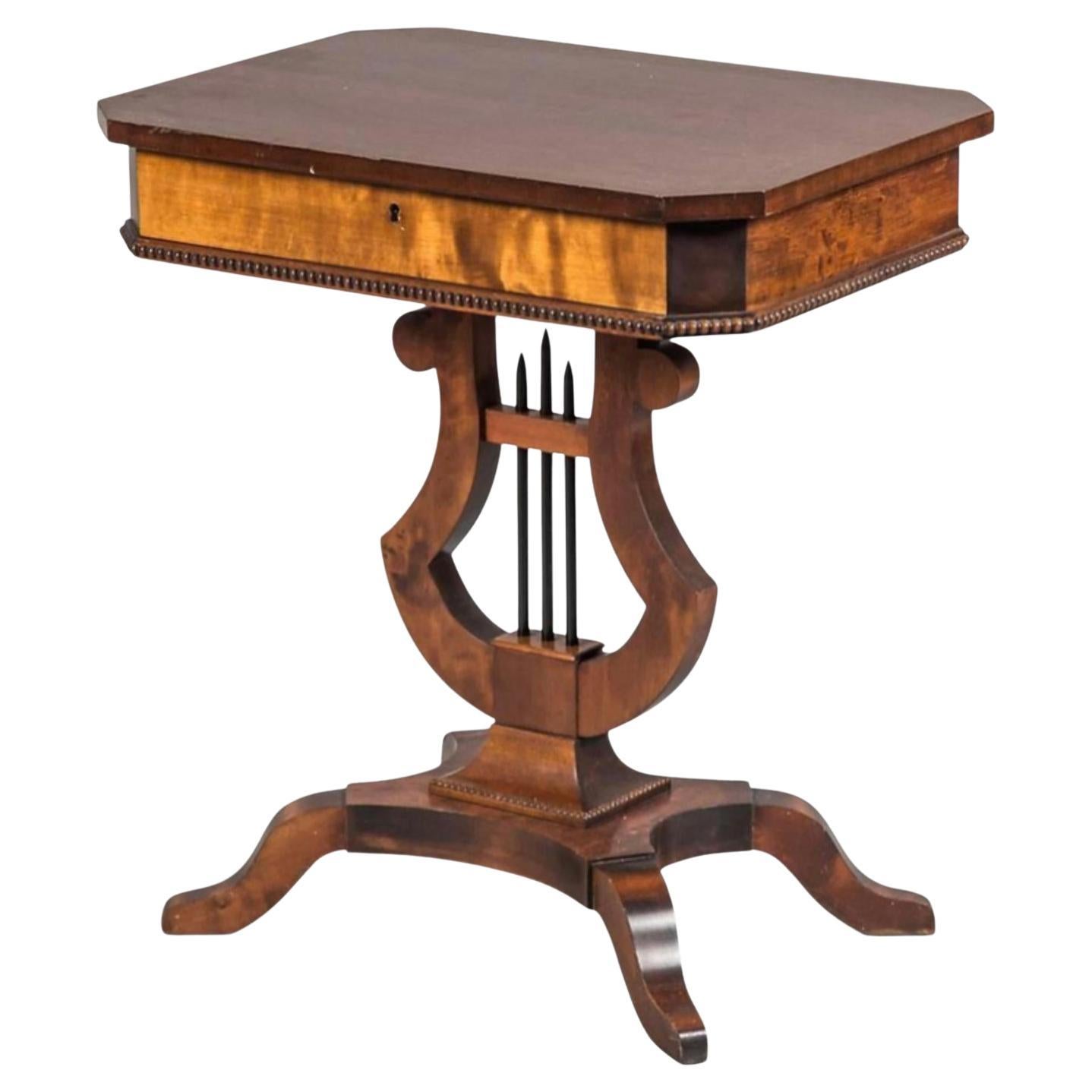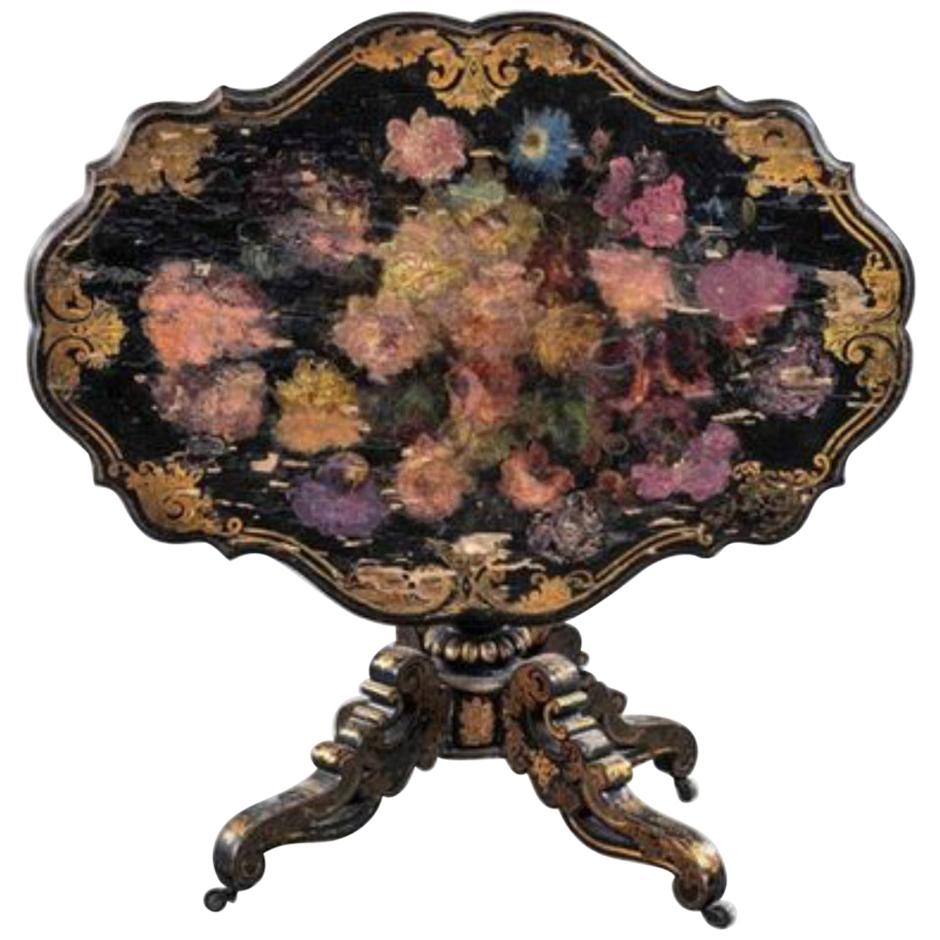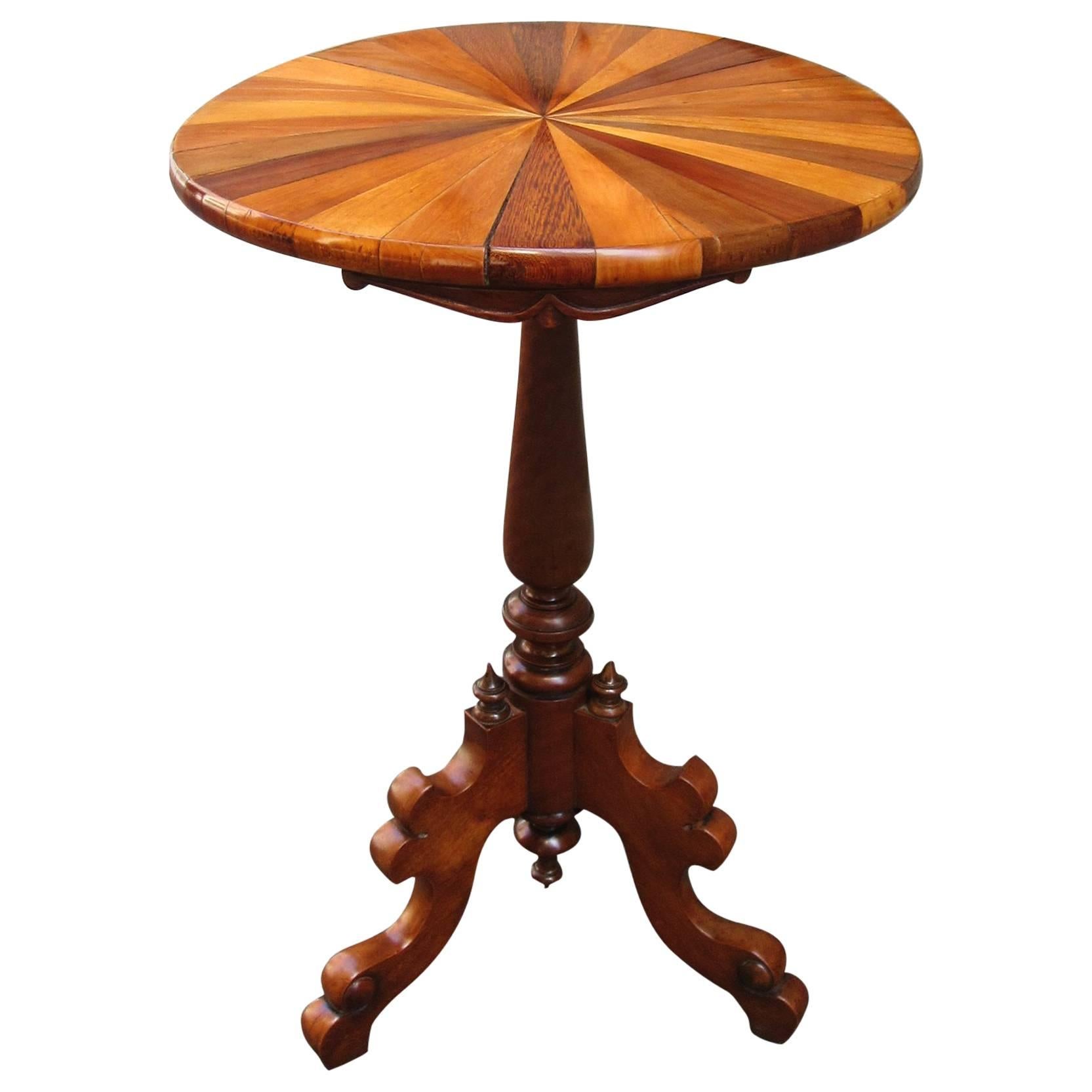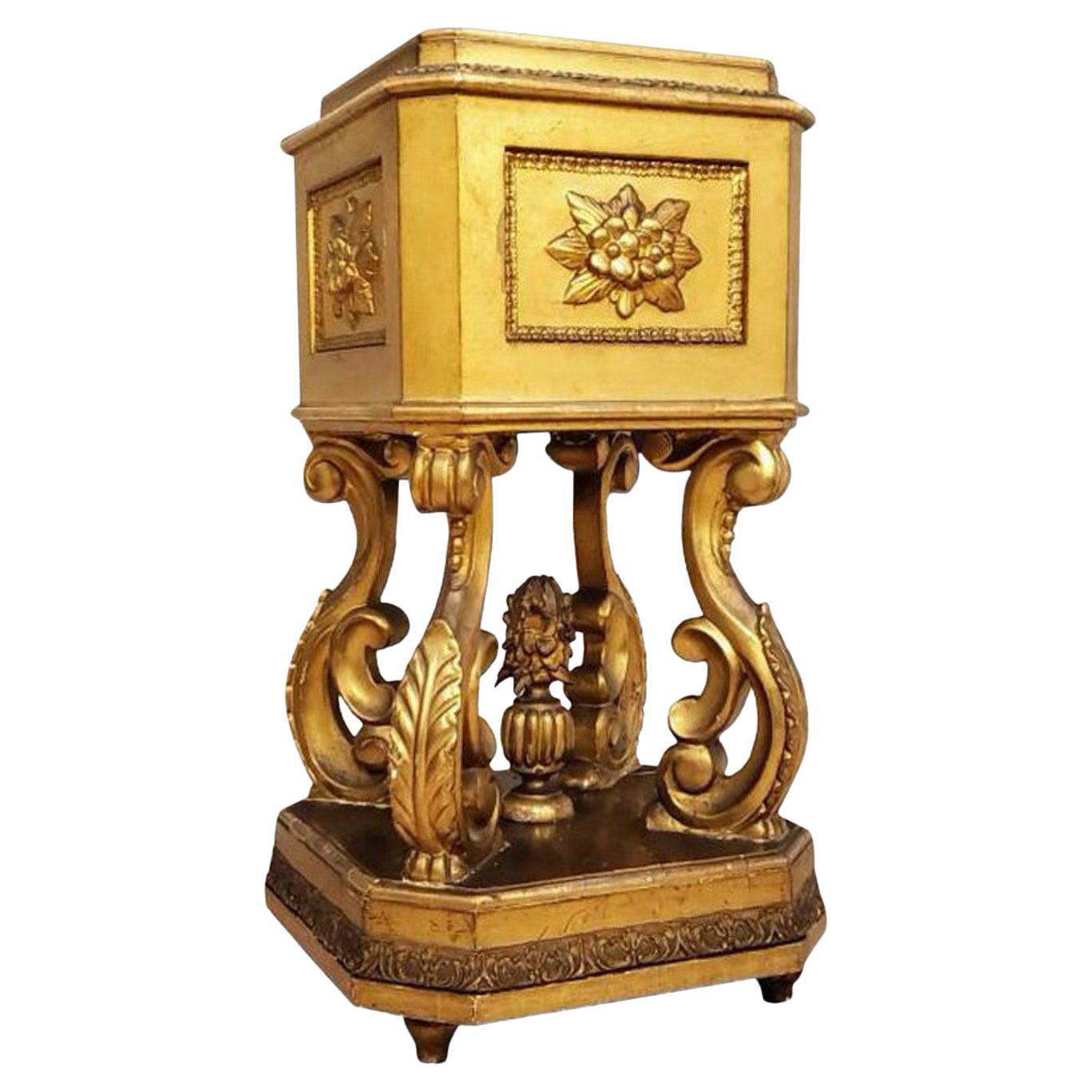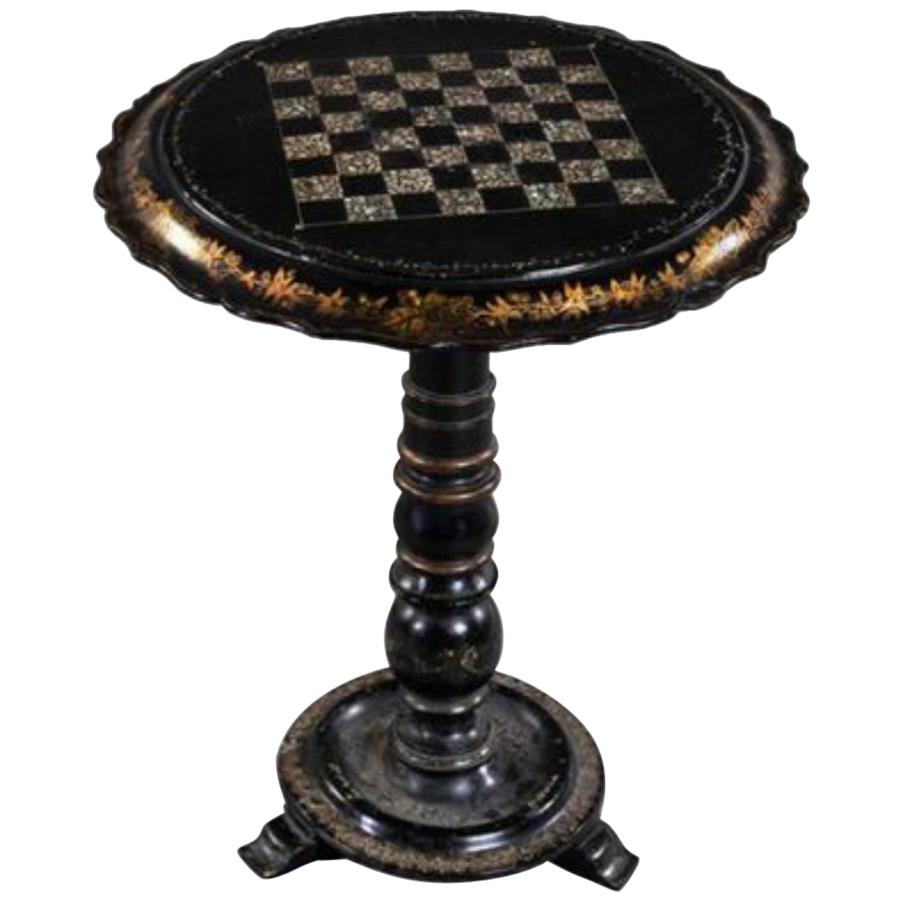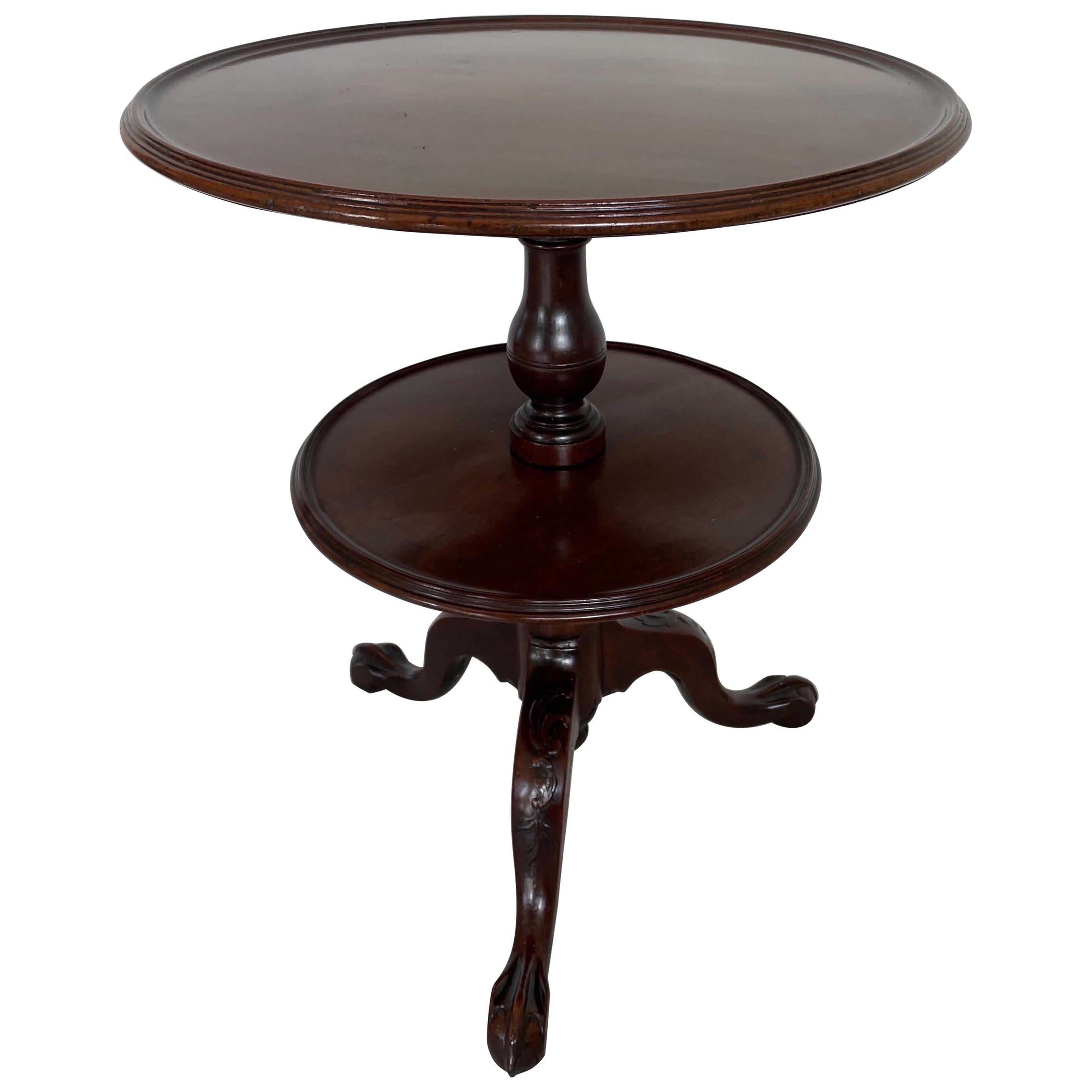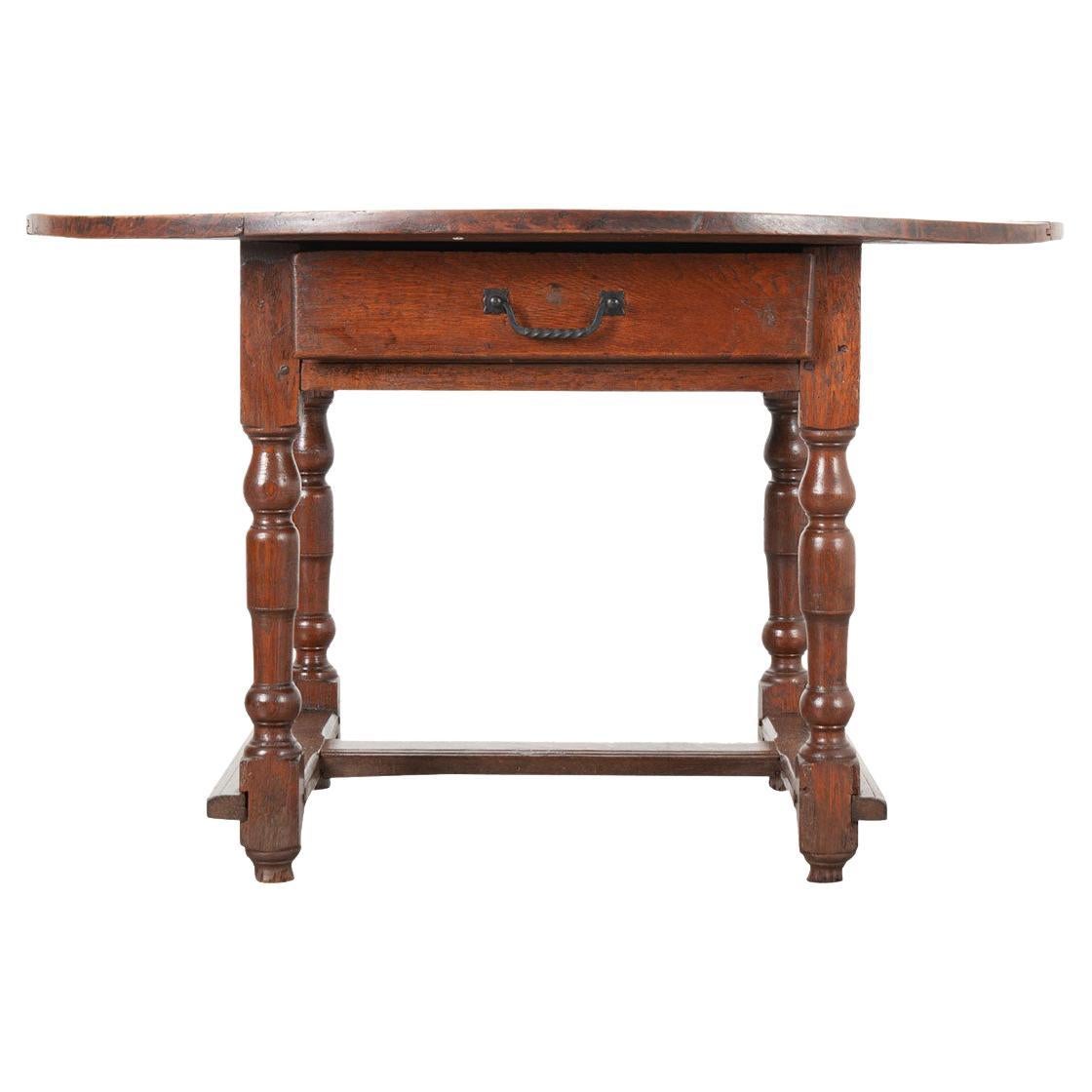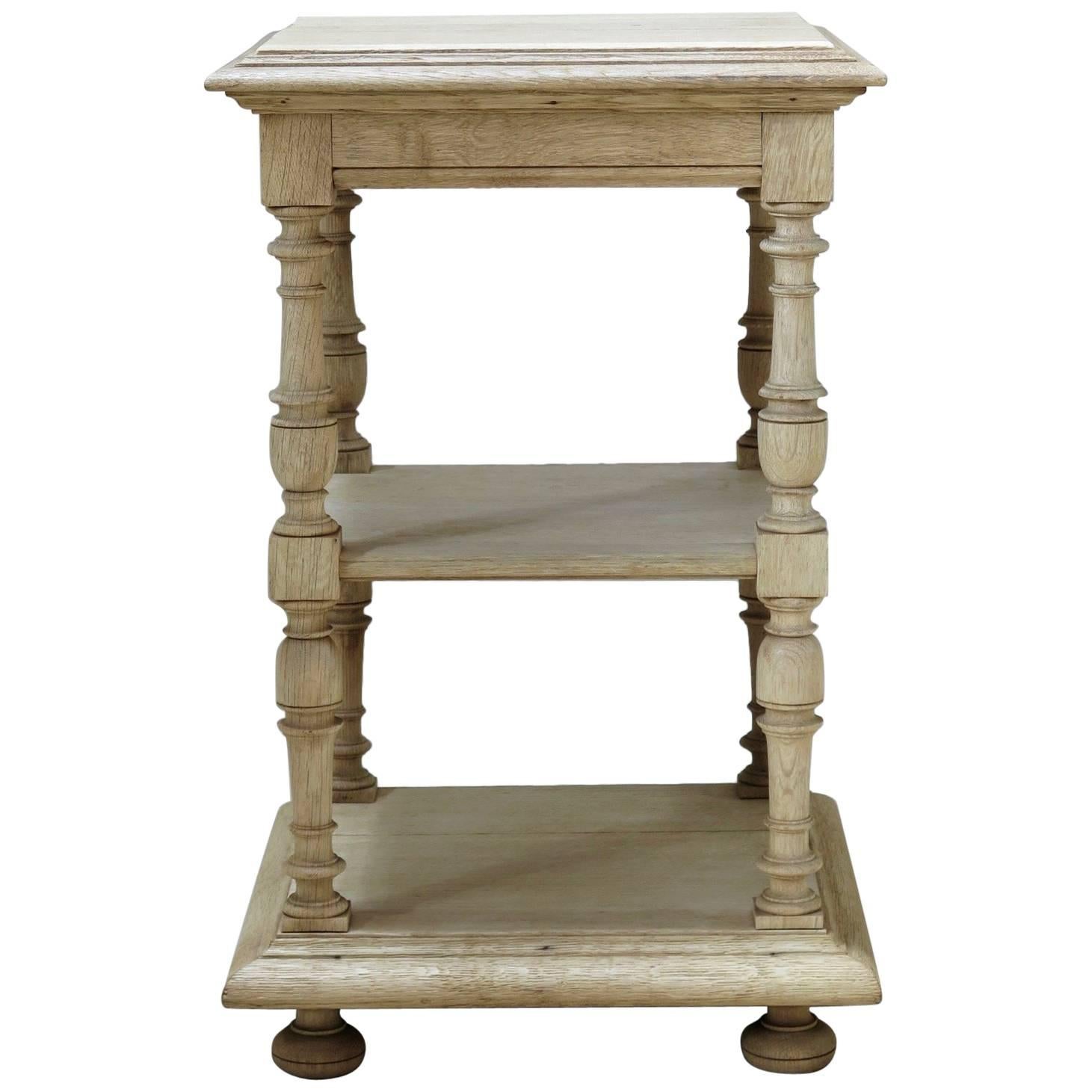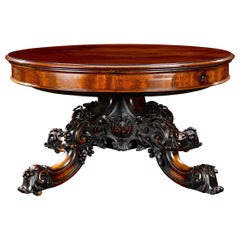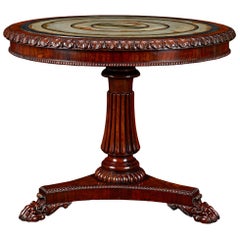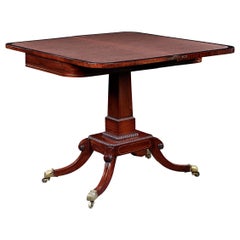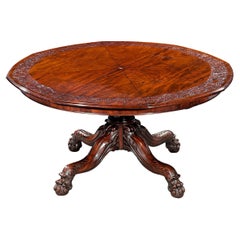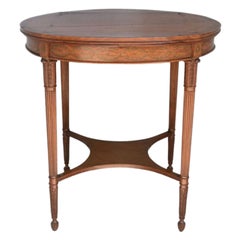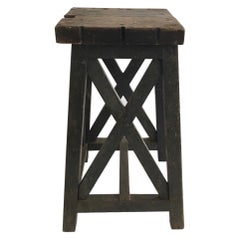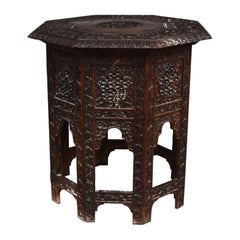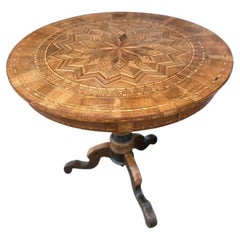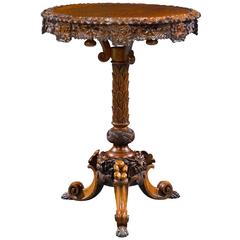
19th Century Oak Lazy Susan Table
View Similar Items
Want more images or videos?
Request additional images or videos from the seller
1 of 3
19th Century Oak Lazy Susan Table
$12,850List Price
About the Item
- Dimensions:Height: 30.125 in (76.52 cm)Diameter: 23.625 in (60.01 cm)
- Style:Other (Of the Period)
- Materials and Techniques:Oak,Carved
- Place of Origin:Europe
- Period:19th Century
- Date of Manufacture:1900
- Condition:
- Seller Location:New Orleans, LA
- Reference Number:Seller: 29-65791stDibs: LU89114954703
About the Seller
5.0
Recognized Seller
These prestigious sellers are industry leaders and represent the highest echelon for item quality and design.
Established in 1912
1stDibs seller since 2010
108 sales on 1stDibs
Typical response time: 4 hours
Authenticity Guarantee
In the unlikely event there’s an issue with an item’s authenticity, contact us within 1 year for a full refund. DetailsMoney-Back Guarantee
If your item is not as described, is damaged in transit, or does not arrive, contact us within 7 days for a full refund. Details24-Hour Cancellation
You have a 24-hour grace period in which to reconsider your purchase, with no questions asked.Vetted Professional Sellers
Our world-class sellers must adhere to strict standards for service and quality, maintaining the integrity of our listings.Price-Match Guarantee
If you find that a seller listed the same item for a lower price elsewhere, we’ll match it.Trusted Global Delivery
Our best-in-class carrier network provides specialized shipping options worldwide, including custom delivery.More From This Seller
View All19th Century Exhibition Model of Expanding Table by Samuel Hawkins
By Samuel Hawkins
Located in New Orleans, LA
A masterpiece of both cabinetmaking and mechanical engineering, this one-of-a-kind expanding table was crafted by the renowned cabinetmaker Samuel Hawkins of London for the Great Exhibition of 1851. Diminutive in size, the fascinating table was designed as a model to demonstrate Hawkins’ innovative patent screw movement to visitors of the Exhibition – six million people in total over five months. It was exhibited again a century later at the Victoria & Albert Museum during the Festival of Britain, an event intended “to symbolise two main qualities of the national character: realism and strength on the one hand, and, on the other, independence and imagination” (Catalogue of the Exhibition, 1951, p.117). To this day, the miniature masterpiece demonstrates the quest of English furniture makers to combine technical innovation with superb craftsmanship.
Displaying exceptional ingenuity, Hawkins’ wind-out screw mechanism allowed one to extend the table’s base to accommodate concentric leaves with the simple crank of a handle. It is based on the inventive expanding table originally designed by Robert Jupe in 1835, which used a swivel mechanism to separate sections of the tabletop and allow for segmented leaves to be inserted. Hawkins’ tabletop, on the other hand, extends outwards directly from the center in order to accommodate additional leaves around its diameter. This unique design allowed the mechanism to also smoothly operate on rectangular tables, which could be wound out from the middle to allow for more table space.
Hawkins was not alone in his endeavor to combine the technical merits of engineering and mechanics with the most artful pursuit of cabinetmaking. The first half of the 19th century saw a prolific increase in the popularity of applying new ideas to traditional furniture principles, which allowed furniture to serve many purposes. The resulting “patent” furniture was practical and refined, though few were as innovative as Hawkins’ prodigious design.
Carved with the year of the Exhibition on the beautifully designed pedestal base, the table is a testament to the significance of this innovation. The model is mentioned in detail in the catalog of the Great Exhibition of 1851, the first international exhibition of industry, manufacturing, and science. Held at London’s dazzling Crystal Palace, its visitors were treated to exhibits from around the globe, including feats of engineering, innovations in industry, and marvels of design. Queen Victoria herself was a frequent visitor, along with her husband, Prince Albert, and others including Charlotte...
Category
Antique 19th Century English Other Tables
Materials
Mahogany
19th Century Rosewood and Pietra Paesina Specimen Table Attributed
By Gillows of Lancaster & London
Located in New Orleans, LA
Pietra Paesina is one of the most scarce and wondrous stones on earth, and the surface of this exceptional early 19th-century center table is inset with...
Category
Antique Early 19th Century English Regency Center Tables
Materials
Marble
Regency-Era Card Table
Located in New Orleans, LA
This ingenious late Regency card table was designed with both beauty and entertainment in mind. When not in use, its folded D-shaped top sits against the wall providing an elegant si...
Category
Antique Early 19th Century English Regency Game Tables
Materials
Wood
$8,850
Expanding Jupe Dining Table by Johnstone and Jeanes
By Robert Jupe
Located in New Orleans, LA
This exceptionally rare circular expanding dining table was designed by Robert Jupe and crafted by the English cabinetmakers Johnstone & Jeanes, successors to Johnstone, Jupe & Co. One of only a handful known from the firm, this table illustrates the Victorian era's quest to combine technical innovation with superb and beautiful craftsmanship. Complete with its original leaves, the table’s circular top is formed from eight separate segments. When the top is rotated, an ingenious swivel mechanism causes the sections to diverge, allowing a set of small or large leaves to be inserted for an adjustable increase in size.
The design for the table was patented by Robert Jupe in 1835, who had envisioned “an improved expanding table so constructed that the sections composing its surface may be caused to diverge from a common center and that the spaces caused thereby may be filled up by inserting leaves or filling pieces.” The first of these fascinating tables were created between 1835 and 1840 during his partnership with John Johnstone and their firm of Johnstone, Jupe & Co. in London. Jupe left the company in 1840, after which the firm changed its name due to a new partnership and became Johnstone & Jeanes. The firm would eventually achieve international fame for its remarkable designs, exhibiting a "circular table made on the expanding principle" like this one at the Great Exhibition of 1851.
Jupe was not alone in his fascination with combining the technical merits of engineering and mechanics with the more artful pursuit of cabinet making. The first half of the 19th century saw a prolific increase in the popularity of applying new ideas to furniture principles, which allowed furniture to serve many purposes. The resulting “patent” furniture...
Category
Antique 19th Century English Victorian Dining Room Tables
Materials
Mahogany
19th Century Chilean Huaso Stirrups
Located in New Orleans, LA
This striking and rare pair of Chilean wooden stirrups are true gems. Also known as estribos, these stirrups are carved from a solid block of wood. Tak...
Category
Antique 19th Century Chilean Other Arms, Armor and Weapons
Materials
Silver, Steel
19th Century Dutch Bureau Bookcase
Located in New Orleans, LA
This magnificent and important Dutch mahogany bureau bookcase, exuberantly carved and adorned with superb figural carvings, impressive scrolled feet and elaborate applied decoration....
Category
Antique 19th Century Dutch Other Bookcases
Materials
Mahogany
You May Also Like
English 19th Century Satinwood Pedestal Table
Located in Marseille, FR
English pedestal table in 19th century satinwood (satin mahogany) with a size of 77 cm of top by 77 cm of height restorations to be planned on the top which has many cracks and some ...
Category
Antique 19th Century Pedestals
Materials
Walnut
Early 19th Century Wood Pedestal
Located in Los Angeles, CA
Beautiful early 19th century pedestal, all wood constructed with no nails. The top measures 15.5 inches square, and 19 inches square at the bottom.
Category
Antique Early 19th Century American Pedestals
Materials
Wood
Hexagonal Indian Rosewood Folding Pedestal Table, Late 19th Century
Located in Marseille, FR
Indian hexagonal folding pedestal table rosewood late 19th richly carved with leaves and flourishes. Height dimension 62 cm for a diameter of 53...
Category
Antique Late 19th Century Pedestals
Materials
Rosewood
Very fine 19th Century Italian Walnut Marquetry Tripod Occasional Table
Located in Petworth,West Sussex, GB
A very fine antique 19th century Italian walnut marquetry pedestal tripod occasional table, from the Sorrento region in fine walnut marquetry ...
Category
Antique 19th Century Italian Tables
Materials
Walnut
$1,831 Sale Price
44% Off
Swedish Biedermeier Antique Lyre Pedestal Table, French Polish, 19th Century A
Located in Lewes, England
Wonderful and unusual 19th century, Swedish Biedermeier lyre pedestal table in a rich deep honey French polish finish.
This table has a pullout dr...
Category
Antique Mid-19th Century Swedish Biedermeier Pedestals
Materials
Pine
$1,104 Sale Price
60% Off
19th Century French Hand Painted Pedestal Table Napoleon III Period
Located in Sofia, BG
Important French wooden blackened pedestal table. The rocking tray of animated form, receiving in its middle an important decoration of flowers painted and underlined by gilded nets....
Category
Antique Mid-19th Century French Napoleon III Pedestals
Materials
Wood
Recently Viewed
View AllMore Ways To Browse
Seattle Vintage Furniture
Tapestry Looms Used
Three Tier Table Mahogany
Vintage Casino
Vintage Wrought Iron Sofa
Walking Table
Wire Shelf
Wrought Iron Couch Vintage
Yellow Ware
1970s Painted Cabinet
19th Century Bamboo Cabinet
19th Century Sevres Clock
Dorothy Draper Style
Dutch Cabinet With Glass
Early 19th Century Bureau
Enamel Kitchen Table Vintage
F Clocks
Gear Table
